Three win Nobel in Chemistry for work on lithium-ion batteries

If you're reading this on a mobile phone or laptop computer, you might thank this year's three laureates for the Nobel Prize in chemistry for their work on lithium-ion batteries.
Yet the batteries developed by the British, American and Japanese winners that make those devices possible are far more revolutionary than just for on-the-go computing and calling. The breakthroughs the three achieved also made storing energy from renewable sources more feasible, opening up a whole new front in the fight against global warming.
"This is a highly-charged story of tremendous potential," said Olof Ramstrom of the Nobel committee for chemistry.
The prize announced Wednesday went to John B. Goodenough, 97, a German-born American engineering professor at the University of Texas; M. Stanley Whittingham, 77, a British-American chemistry professor at the State University of New York at Binghamton; and Akira Yoshino, 71, of chemicals company Asahi Kasei Corp. and Meijo University in Japan.
The honor awarded to the three scientists is a capstone of a truly transformative technology that has permeated billions of lives across the planet, including anyone who uses mobile phones, computers, pacemakers, electric cars and beyond.
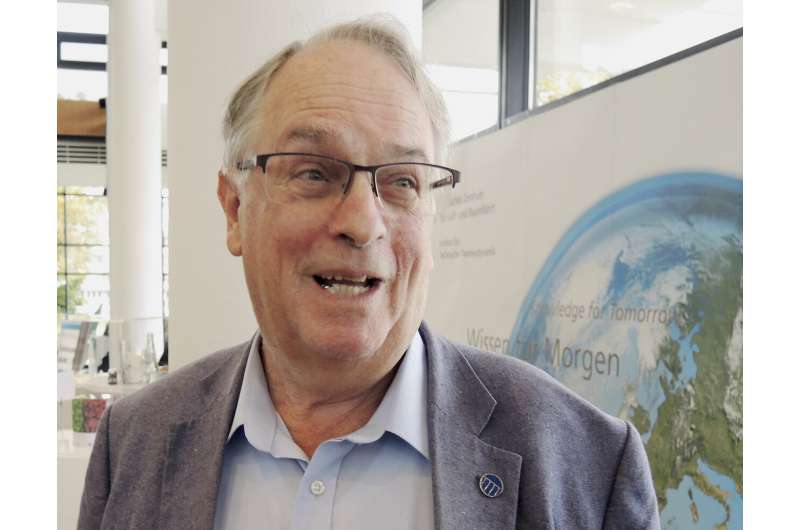
"The heart of the phone is the rechargeable battery. The heart of the electric vehicle is the rechargeable battery. The success and failure of so many new technologies depends on the batteries," said Alexej Jerschow, a chemist at New York University, whose research focuses on lithium ion battery diagnostics.
Whittingham expressed hope the Nobel spotlight could give a new impetus to efforts to meet the world's ravenous—and growing—demands for energy.
"I am overcome with gratitude at receiving this award, and I honestly have so many people to thank, I don't know where to begin," he said in a statement issued by his university. "It is my hope that this recognition will help to shine a much-needed light on the nation's energy future."
Goodenough, who is considered an intellectual giant of solid state chemistry and physics, is the oldest person to ever win a Nobel Prize—edging Arthur Ashkin, who was 96 when he was awarded the Nobel for physics last year. Goodenough still works every day.
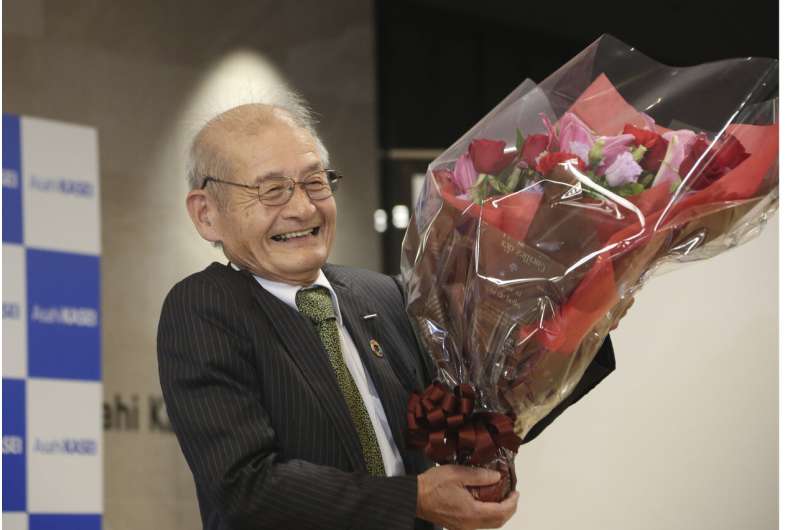
"That's the nice thing—they don't make you retire at a certain age in Texas. They allow you to keep working," he told reporters in London. "So I've had an extra 33 years to keep working in Texas."
The three each had unique breakthroughs that cumulatively laid the foundation for the development of a commercial rechargeable battery, to replace alkaline batteries like those containing lead or zinc, which had their origins in the 19th century.
Lithium-ion batteries—the first truly portable and rechargeable batteries—took more than a decade to develop, and drew upon the work of multiple scientists in the U.S., Japan and around the world.
The work had its roots in the oil crisis in the 1970s, when Whittingham was working on efforts to develop fossil fuel-free energy technologies. He harnessed the enormous tendency of lithium—the lightest metal—to give away its electrons to make a battery capable of generating just over two volts.

By 1980, Goodenough had doubled the capacity of the battery to four volts by using cobalt oxide in the cathode—one of two electrodes, along with the anode, that make up the ends of a battery.
But that battery remained too explosive for general commercial use. That's where Yoshino's work in the 1980s came in. He substituted petroleum coke, a carbon material, in the battery's anode. This step paved the way for the first lightweight, safe, durable and rechargeable commercial batteries to be built and enter the market in 1991.
"We have gained access to a technical revolution," said Sara Snogerup Linse of the Nobel committee for chemistry. "The laureates developed lightweight batteries with high enough potential to be useful in many applications—truly portable electronics: mobile phones, pacemakers, but also long-distance electric cars."
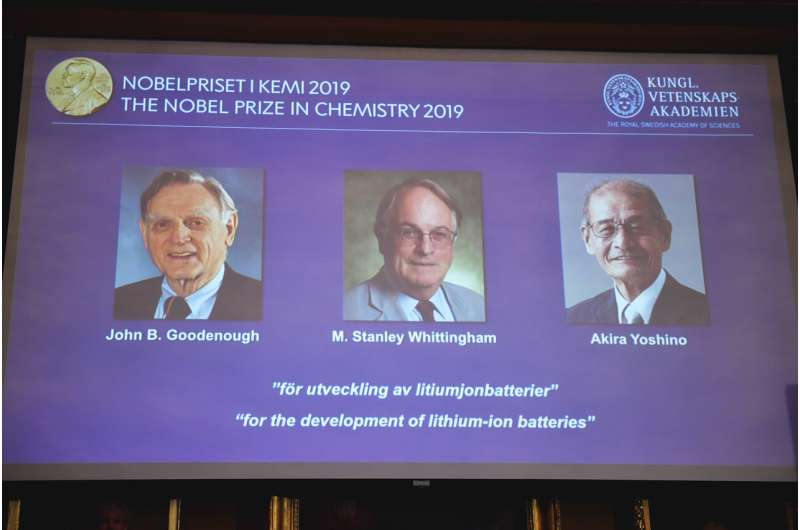
"The ability to store energy from renewable sources—the sun, the wind—opens up for sustainable energy consumption," she added.
Speaking at a news conference in Tokyo, Yoshino said he thought there might be a long wait before the Nobel committee turned to his specialty—but he was wrong. He broke the news to his wife, who was just as surprised as he was.
"I only spoke to her briefly and said, 'I got it,' and she sounded she was so surprised that her knees almost gave way," he said.
The trio will share a 9-million kronor ($918,000) cash award. Their gold medals and diplomas will be conferred in Stockholm on Dec. 10—the anniversary of prize founder Alfred Nobel's death in 1896.
On Tuesday, Canadian-born James Peebles won the Nobel physics prize for his theoretical discoveries in cosmology together with Swiss scientists Michel Mayor and Didier Queloz, who were honored for finding an exoplanet—a planet outside our solar system—that orbits a solar-type star.
-
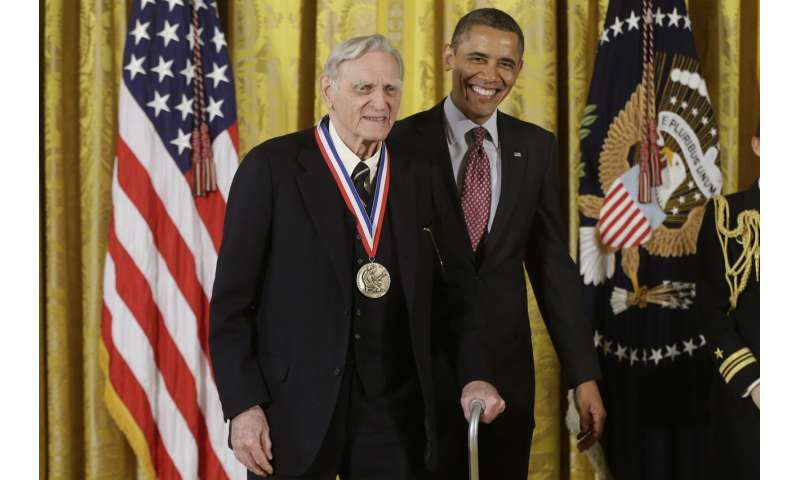
In this Friday, Feb. 1, 2013 file photo, U.S President Barack Obama awards the National Medal of Science to Dr. John Goodenough of the University of Texas, during a ceremony in the East Room of the White House in Washington. The 2019 Nobel Prize in Chemistry has been awarded to John B. Goodenough, M. Stanley Whittingham and Akira Yoshino "for the development of lithium-ion batteries." (AP Photo/Charles Dharapak, File) -
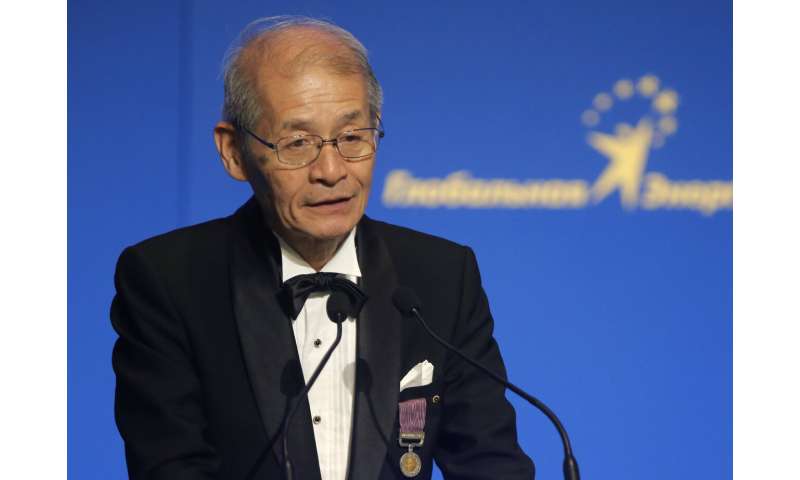
In this Friday, June 21, 2013 file photo Japanese chemist Akira Yoshino speaks during Global Energy Prize award ceremony in St. Petersburg, Russia. The 2019 Nobel Prize in Chemistry has been awarded to John B. Goodenough, M. Stanley Whittingham and Akira Yoshino "for the development of lithium-ion batteries." (AP Photo/Dmitry Lovetsky, File) -
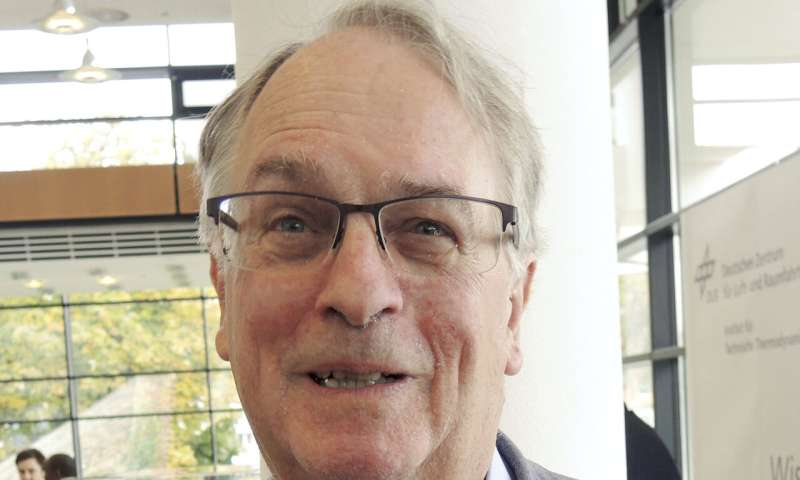
Stanley Whittingham, a British-American chemistry professor at the State University of New York at Binghamton, attends the Advanced Lithium Batteries for Automobile Applications (ABAA) conference in Ulm, Germany, Wednesday, Oct. 9, 2019. Whittingham is one of three scientists who have won this year's Nobel Prize in Chemistry for their contributions to lithium-ion batteries, which have reshaped energy storage and transformed cars, mobile phones and many other devices in an increasingly portable and electronic world. (Thomas Burmeister/dpa via AP) -
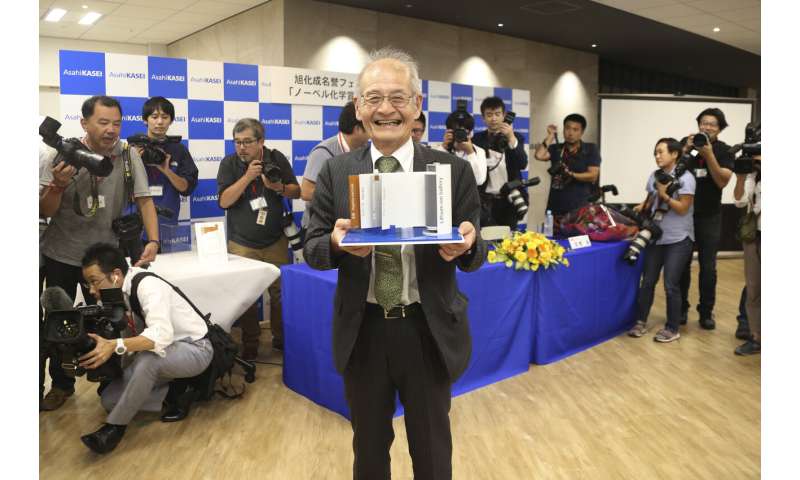
Winner of Nobel Prize of Chemistry Akira Yoshino poses a photo with a model Lithium-ion battery during a press conference in Tokyo, Wednesday, Oct. 9, 2019. Yoshino is one of the three scientists who have won this year's Nobel Prize in Chemistry for their contributions to lithium-ion batteries, which have reshaped energy storage and transformed cars, mobile phones and many other devices in an increasingly portable and electronic world. (AP Photo/Koji Sasahara) -
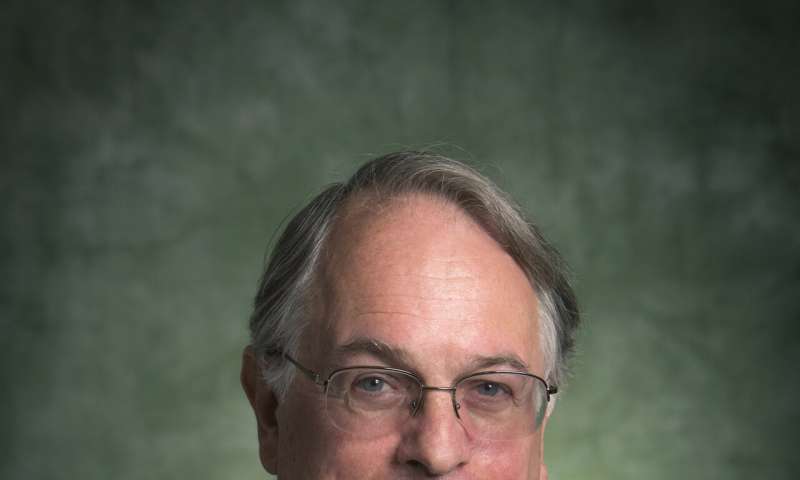
This this May 27, 2015 photo provided by Binghamton University, Professor M. Stanley Whittingham poses for a portrait in Vestal, N.Y. Whittingham is among three scientists who won the Nobel Prize in Chemistry on Wednesday, Oct. 9, 2019, for their work leading to the development of lithium-ion batteries. He shares the prize with John B. Goodenough, a German-born engineering professor at the University of Texas, and Japan's Akira Yoshino, of Asahi Kasei Corporation and Meijo University. (Jonathan Cohen/Binghamton University via AP) -
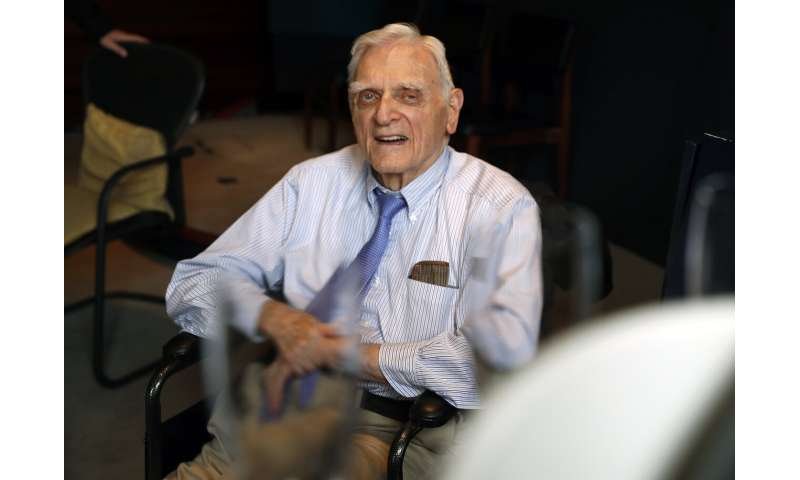
Nobel chemistry winner John B. Goodenough poses for the media at the Royal Society in London, Wednesday, Oct. 9, 2019. The 2019 Nobel Prize in Chemistry has been awarded to John B. Goodenough, M. Stanley Whittingham and Akira Yoshino for the development of lithium-ion batteries. (AP Photo/Alastair Grant) -
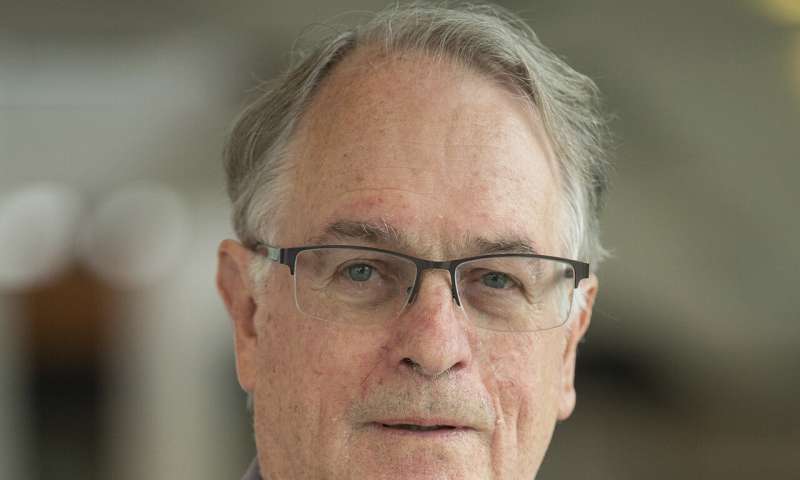
Stanley Whittingham, a British-American chemistry professor at the State University of New York at Binghamton, attends the Advanced Lithium Batteries for Automobile Applications (ABAA) conference in Ulm, Germany, Wednesday, Oct. 9, 2019. Whittingham is one of three scientists who have won this year's Nobel Prize in Chemistry for their contributions to lithium-ion batteries, which have reshaped energy storage and transformed cars, mobile phones and many other devices in an increasingly portable and electronic world. (Sebastian Gollnow/dpa via AP) -
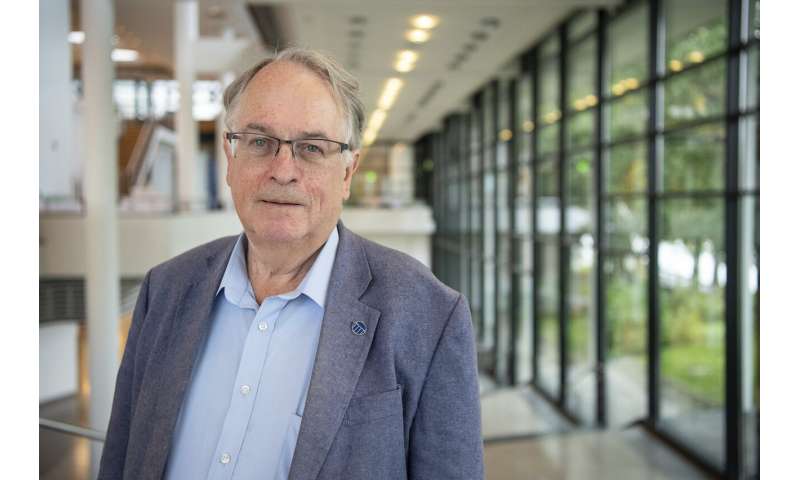
Stanley Whittingham, a British-American chemistry professor at the State University of New York at Binghamton, attends the Advanced Lithium Batteries for Automobile Applications (ABAA) conference in Ulm, Germany, Wednesday, Oct. 9, 2019. Whittingham is one of three scientists who have won this year's Nobel Prize in Chemistry for their contributions to lithium-ion batteries, which have reshaped energy storage and transformed cars, mobile phones and many other devices in an increasingly portable and electronic world. (Sebastian Gollnow/dpa via AP)
Americans William G. Kaelin Jr. and Gregg L. Semenza and Britain's Peter J. Ratcliffe won the Nobel prize for advances in physiology or medicine on Monday. They were cited for their discoveries of "how cells sense and adapt to oxygen availability."
Two Nobel literature laureates are to be announced Thursday—one for 2018 and one for 2019—because last year's award was suspended after a sex abuse scandal rocked the Swedish Academy. The coveted Nobel Peace Prize is Friday and the economics award will be announced on Monday.
Press release: The Nobel Prize in Chemistry 2019
The Royal Swedish Academy of Sciences has decided to award the Nobel Prize in Chemistry 2019 to
John B. Goodenough
The University of Texas at Austin, USA
M. Stanley Whittingham
Binghamton University, State University of New York, USA
Akira Yoshino
Asahi Kasei Corporation, Tokyo, Japan
Meijo University, Nagoya, Japan
"for the development of lithium-ion batteries"
They created a rechargeable world
The Nobel Prize in Chemistry 2019 rewards the development of the lithium-ion battery. This lightweight, rechargeable and powerful battery is now used in everything from mobile phones to laptops and electric vehicles. It can also store significant amounts of energy from solar and wind power, making possible a fossil fuel-free society.
Lithium-ion batteries are used globally to power the portable electronics that we use to communicate, work, study, listen to music and search for knowledge. Lithiumion batteries have also enabled the development of long-range electric cars and the storage of energy from renewable sources, such as solar and wind power.
The foundation of the lithium-ion battery was laid during the oil crisis in the 1970s. Stanley Whittingham worked on developing methods that could lead to fossil fuel-free energy technologies. He started to research superconductors and discovered an extremely energy-rich material, which he used to create an innovative cathode in a lithium battery. This was made from titanium disulphide which, at a molecular level, has spaces that can house – intercalate – lithium ions.
The battery's anode was partially made from metallic lithium, which has a strong drive to release electrons. This resulted in a battery that literally had great potential, just over two volts. However, metallic lithium is reactive and the battery was too explosive to be viable.
John Goodenough predicted that the cathode would have even greater potential if it was made using a metal oxide instead of a metal sulphide. After a systematic search, in 1980 he demonstrated that cobalt oxide with intercalated lithium ions can produce as much as four volts. This was an important breakthrough and would lead to much more powerful batteries.
With Goodenough's cathode as a basis, Akira Yoshino created the first commercially viable lithium-ion battery in 1985. Rather than using reactive lithium in the anode, he used petroleum coke, a carbon material that, like the cathode's cobalt oxide, can intercalate lithium ions.
The result was a lightweight, hardwearing battery that could be charged hundreds of times before its performance deteriorated. The advantage of lithium-ion batteries is that they are not based upon chemical reactions that break down the electrodes, but upon lithium ions flowing back and forth between the anode and cathode.
Lithium-ion batteries have revolutionised our lives since they first entered the market in 1991. They have laid the foundation of a wireless, fossil fuel-free society, and are of the greatest benefit to humankind.
Popular science background
They developed the world's most powerful battery
The Nobel Prize in Chemistry 2019 is awarded to John B. Goodenough, M. Stanley Whittingham and Akira Yoshino for their contributions to the development of the lithium-ion battery. This rechargeable battery laid the foundation of wireless electronics such as mobile phones and laptops. It also makes a fossil fuel-free world possible, as it is used for everything from powering electric cars to storing energy from renewable sources.
An element rarely gets to play a central role in a drama, but the story of 2019's Nobel Prize in Chemistry has a clear protagonist: lithium, an ancient element that was created during the first minutes of the Big Bang. Humankind became aware of it in 1817, when Swedish chemists Johan August Arfwedson and Jöns Jacob Berzelius purified it out of a mineral sample from Utö Mine, in the Stockholm archipelago.
Berzelius named the new element after the Greek word for stone, lithos. Despite its heavy name, it is the lightest solid element, which is why we hardly notice the mobile phones we now carry around.
To be completely correct – the Swedish chemists did not actually find pure metallic lithium, but lithium ions in the form of a salt. Pure lithium has set off many fire alarms, not least in the story we will tell here; it is an unstable element that must be stored in oil so it does not react with air.
Lithium's weakness – its reactivity – is also its strength. In the early 1970s, Stanley Whittingham used lithium's enormous drive to release its outer electron when he developed the first functional lithium battery. In 1980, John Goodenough doubled the battery's potential, creating the right conditions for a vastly more powerful and useful battery. In 1985, Akira Yoshino succeeded in eliminating pure lithium from the battery, instead basing it wholly on lithium ions, which are safer than pure lithium. This made the battery workable in practice. Lithium-ion batteries have brought the greatest benefit to humankind, as they have enabled the development of laptop computers, mobile phones, electric vehicles and the storage of energy generated by solar and wind power.
We will now step fifty years back in time, to the beginning of the lithium-ion battery's highly charged story.
Petrol haze revitalises battery research
In the mid-20th century, the number of petrol-driven cars in the world increased significantly, and their exhaust fumes worsened the harmful smog found in big cities. This, combined with the growing realisation that oil is a finite resource, sounded an alarm for both vehicle manufacturers and oil companies. They needed to invest in electric vehicles and alternative sources of energy if their businesses were to survive.
Electric vehicles and alternative sources of energy both require powerful batteries that can store large amounts of energy. There were really only two types of rechargeable batteries on the market at this time: the heavy lead battery that had been in invented back in 1859 (and which is still used as a starter battery in petrol-driven cars) and the nickel-cadmium battery that was developed in the first half of the 20th century.
Oil companies invest in new technology
The threat of oil running out resulted in an oil giant, Exxon, deciding to diversify its activities. In a major investment in basic research they recruited some of that time's foremost researchers in the field of energy, giving them the freedom to do pretty much what they wanted as long as it did not involve petroleum.
Stanley Whittingham was among those who moved to Exxon in 1972. He came from Stanford University, where his research had included solid materials with atom-sized spaces in which charged ions can attach. This phenomenon is called intercalation. The materials' properties change when ions are caught inside them. At Exxon, Stanley Whittingham and his colleagues started to investigate superconducting materials, including tantalum disulphide, which can intercalate ions. They added ions to tantalum disulphide and studied how its conductivity was affected.
Whittingham discovers an extremely energy-dense material
As is so often the case in science, this experiment led to an unexpected and valuable discovery. It turned out that potassium ions affected the conductivity of tantalum disulphide, and when Stanley Whittingham started to study the material in detail he observed that it had a very high energy density. The interactions that arose between the potassium ions and the tantalum disulphide were surprisingly energy rich and, when he measured the material's voltage, it was a couple of volts. This was better than many of that time's batteries. Stanley Whittingham quickly realised that it was time to change track, moving to the development of new technology that could store energy for the electric vehicles of the future. However, tantalum is one of the heavier elements and the market did not need to be laden with more heavy batteries – so he replaced tantalum with titanium, an element which has similar properties but is much lighter.
Lithium in the negative electrode
Isn't lithium supposed to have pride of place in this story? Well, this is where lithium enters the narrative – as the negative electrode on Stanley Whittingham's innovative battery. Lithium was not a random choice; in a battery, electrons should flow from the negative electrode – the anode – to the positive one – the cathode. Therefore, the anode should contain a material that easily gives up its electrons and, of all the elements, lithium is the one that most willingly releases electrons.
The result was a rechargeable lithium battery that worked at room temperature and – literally – had great potential. Stanley Whittingham travelled to Exxon's headquarters in New York to talk about the project. The meeting lasted about fifteen minutes, with the management group subsequently making a rapid decision: they would develop a commercially viable battery using Whittingham's discovery.
The battery explodes and the oil price falls
Unfortunately, the group that was to start producing the battery suffered some setbacks. As the new lithium battery was repeatedly charged, thin whiskers of lithium grew from the lithium electrode. When they reached the other electrode, the battery short-circuited which could lead to an explosion. The fire brigade had to put out a number of fires and finally threatened to make the laboratory pay for the special chemicals used to extinguish lithium fires.
To make the battery safer, aluminium was added to the metallic lithium electrode and the electrolyte between the electrodes was changed. Stanley Whittingham announced his discovery in 1976 and the battery began to be produced on a small scale for a Swiss clockmaker that wanted to use it in solar-powered timepieces.
The next objective was to scale up the rechargeable lithium battery so it could power a car. However, the price of oil fell dramatically in the early 1980s and Exxon needed to make cutbacks. The development work was discontinued and Whittingham's battery technology was licenced to three different companies in three different parts of the world.
However, this did not mean that development stopped. When Exxon gave up, John Goodenough took over.
The oil crisis makes Goodenough interested in batteries
As a child, John Goodenough had significant problems learning to read, which was one reason why he was drawn to mathematics and eventually – after World War Two – also physics. He worked for many years at the Lincoln Laboratory at the Massachusetts Institute of Technology, MIT. While there, he contributed to the development of random access memory (RAM) which is still a fundamental component of computing.
John Goodenough, like so many other people in the 1970s, was affected by the oil crisis and wanted to contribute to the development of alternative sources of energy. However, the Lincoln Laboratory was funded by the US Air Force and did not permit all kinds of research, so when he was offered a position as professor of inorganic chemistry at Oxford University in Great Britain, he took the chance and entered the important world of energy research.
High voltages when lithium ions hide in cobalt oxide
John Goodenough knew about Whittingham's revolutionary battery, but his specialised knowledge of matter's interior told him that its cathode could have a higher potential if it was built using a metal oxide instead of a metal sulphide. A few people in his research group were then tasked with finding a metal oxide that produced a high voltage when it intercalated lithium ions, but which did not collapse when the ions were removed.
This systematic search was more successful than John Goodenough had dared to hope. Whittingham's battery generated more than two volts, but Goodenough discovered that the battery with lithiumcobalt oxide in the cathode was almost twice as powerful, at four volts.
One key to this success was John Goodenough's realisation that batteries did not have to be manufactured in their charged state, as had been done previously. Instead, they could be charged afterwards. In 1980, he published the discovery of this new, energy-dense cathode material which, despite its low weight, resulted in powerful, high-capacity batteries. This was a decisive step towards the wireless revolution.
Japanese companies want lightweight batteries for new electronics
However, in the West, as oil became cheaper, interest paled in investments in alternative energy technology and the development of electric vehicles. Things were different in Japan; electronics companies were desperate for lightweight, rechargeable batteries that could power innovative electronics, such as video cameras, cordless telephones and computers. One person who saw this need was Akira Yoshino from the Asahi Kasei Corporation. Or as he put it: "I just sort of sniffed out the direction that trends were moving. You could say I had a good sense of smell."
Yoshino builds the first commercially viable lithium-ion battery
When Akira Yoshino decided to develop a functional rechargeable battery, he had Goodenough's lithium-cobalt oxide as the cathode and tried using various carbon-based materials as the anode. Researchers had previously shown that lithium ions could be intercalated in the molecular layers in graphite, but the graphite was broken down by the battery's electrolyte. Akira Yoshino's eureka moment came when he instead tried using petroleum coke, a by-product of the oil industry. When he charged the petroleum coke with electrons, the lithium ions were drawn into the material. Then, when he turned on the battery, the electrons and lithium ions flowed towards the cobalt oxide in the cathode, which has a much higher potential.
The battery developed by Akira Yoshino is stable, lightweight, has a high capacity and produces a remarkable four volts. The greatest advantage of the lithium-ion battery is that the ions are intercalated in the electrodes. Most other batteries are based on chemical reactions in which the electrodes are slowly but surely changed. When a lithium-ion battery is charged or used, the ions flow between the electrodes without reacting with their surroundings. This means the battery has a long life and can be charged hundreds of times before its performance deteriorates.
Another big advantage is that the battery has no pure lithium. In 1986, when Akira Yoshino was testing the battery's safety, he exercised caution and used a facility designed for testing explosive devices. He dropped a large piece of iron on the battery, but nothing happened. However, on repeating the experiment with a battery that contained pure lithium, there was a violent explosion.
Passing safety testing was fundamental to the future of the battery. Akira Yoshino says that this was "the moment when the lithium-ion battery was born".
The lithium-ion battery – necessary for a fossil fuel-free society
In 1991, a major Japanese electronics company started selling the first lithium-ion batteries, leading to a revolution in electronics. Mobile phones shrank, computers became portable and MP3 players and tablets were developed.
Subsequently, researchers around the world have searched through the periodic table on the hunt for even better batteries, but no one has yet succeeded in inventing something that beats the lithiumion battery's high capacity and voltage. However, the lithium-ion battery has been changed and improved; among other things, John Goodenough has replaced the cobalt oxide with iron phosphate, which makes the battery more environmentally friendly.
Like almost everything else, the production of lithium-ion batteries has an impact on the environment, but there are also huge environmental benefits. The battery has enabled the development of cleaner energy technologies and electric vehicles, thus contributing to reduced emissions of greenhouse gases and particulates.
Through their work, John Goodenough, Stanley Whittingham and Akira Yoshino have created the right conditions for a wireless and fossil fuel-free society, and so brought the greatest benefit to humankind.
© 2019 The Associated Press. All rights reserved.

















